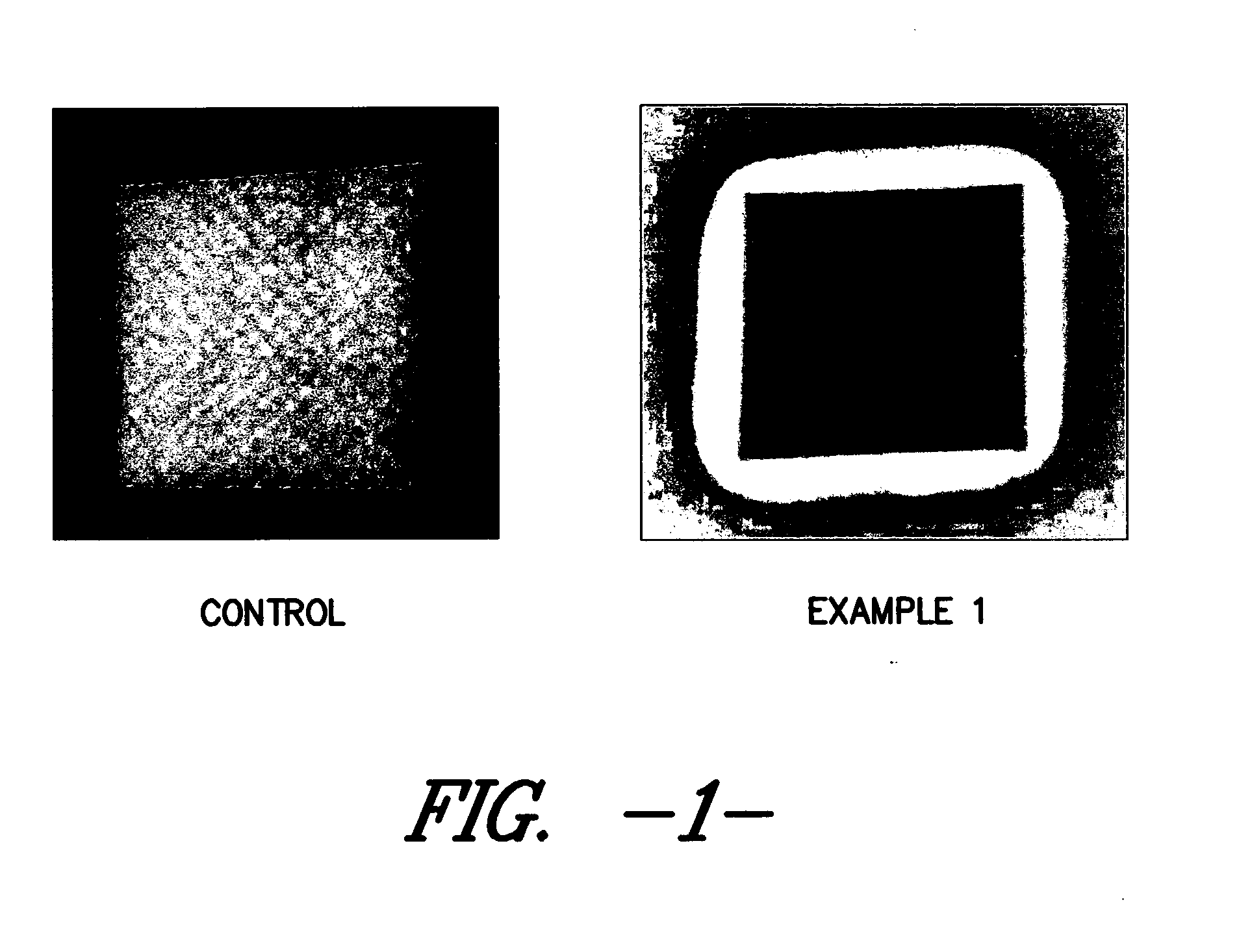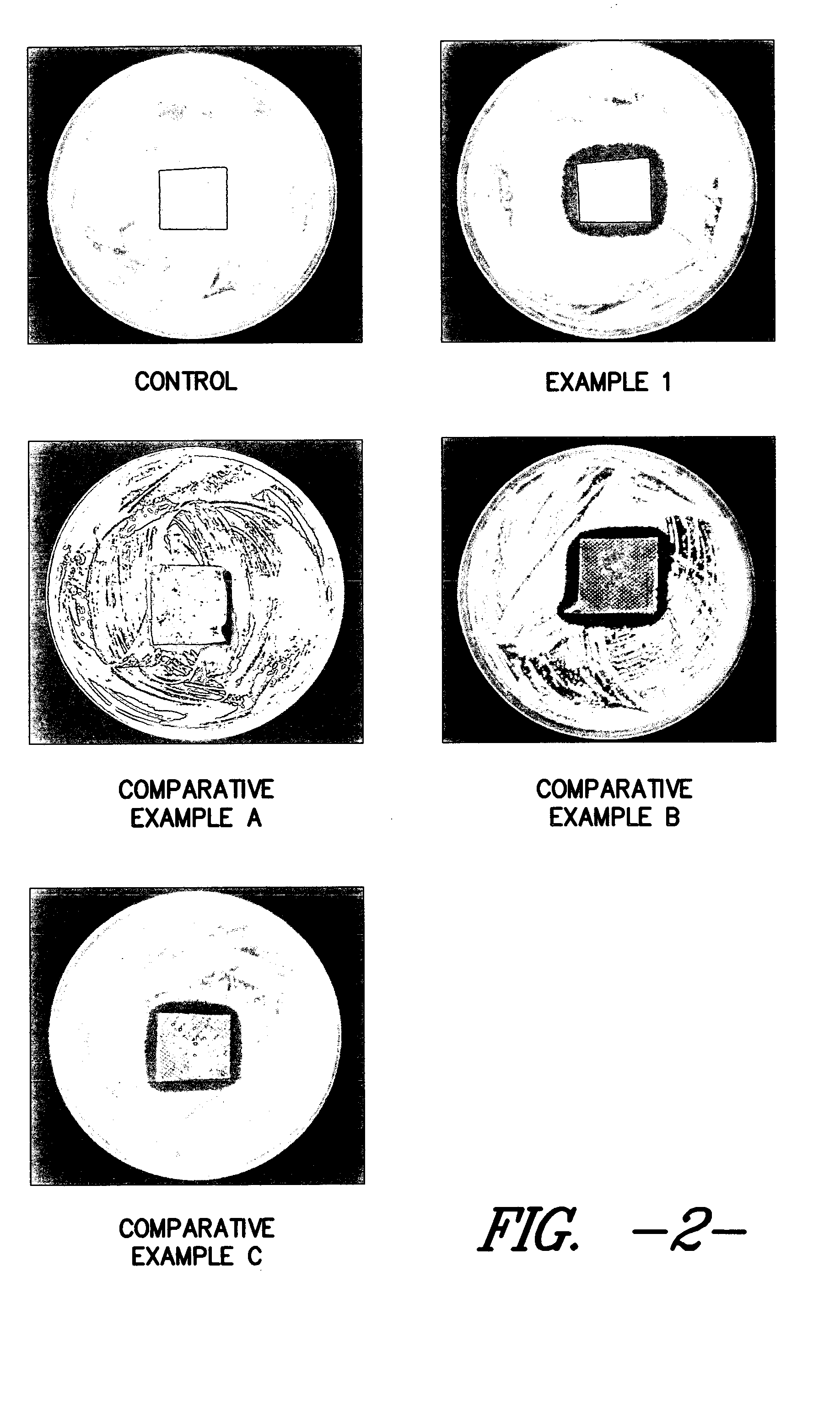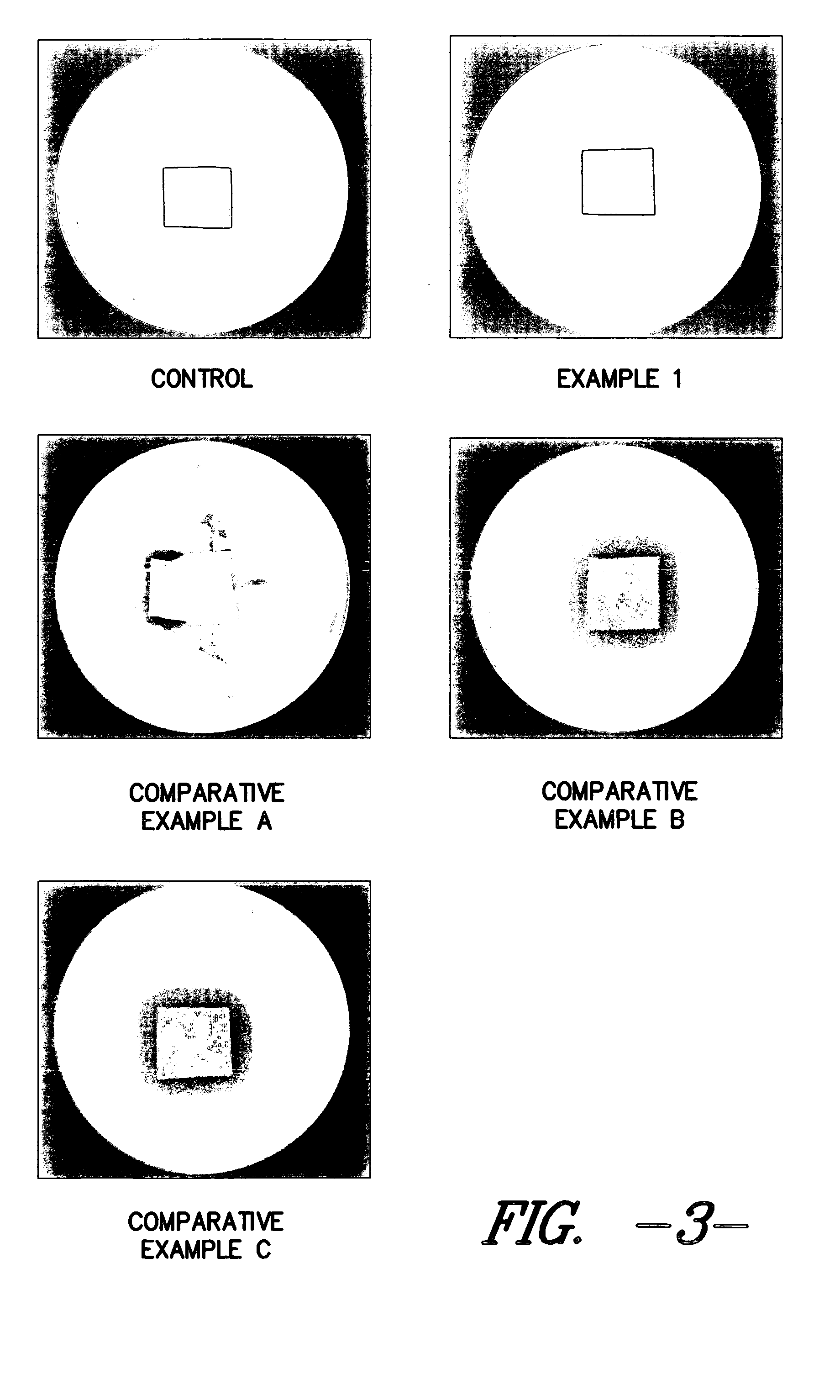Thus, it is known that placing surface available silver in contact with a wound allows the silver to enter the wound and become ingested by undesirable
bacteria and fungi that grow and prosper in the warm, moist environment of the
wound site.
Especially in chronic, slow-
healing wounds, when the application of the wound care device is required for an extended period of time, the lack of
oxygen to the
wound site may lead to additional bacterial and / or
fungal growth.
This growth, quite often, leads to infection of the wound and the creation of undesirable odors.
As a result of less frequent changing, the wound care device may develop unwanted
odor from association with the wound.
Furthermore, it is readily known that silver-
ion antimicrobial agents, such as
ion-exchange compounds like
zirconium phosphates, glasses, and / or zeolites, are generally susceptible to discoloration and, due to the
solid nature thereof, have a tendency to discolor the substrate in which they are incorporated.
This is especially problematic in the medical industry, and specifically in wound care devices, where examination of the
wound site as well as the
bandage or dressing covering the wound, is an important indicator of the effectiveness of the treatment administered for a particular wound.
As such, evidence of discoloration on the wound care device may indicate infection at a wound site.
Thus, it is important to those in the medical industry that the wound care device itself does not become discolored merely because silver ions are undergoing reduction, which can lead to
confusion as to the effectiveness of the treatment being administered to the wound.
However, such melt-spun fibers are expensive to produce due to the large amount of silver-based compound required to provide sufficient antimicrobial activity, especially in light of the migratory characteristics of the compound from within the
fiber itself to its surface.
As such, when these silver-containing fibers are combined to form a wound care device, the silver located on the interior of the
fiber may never reach the wound site during the useful life of the device to provide any
advantage to the healing process.
Thus, this provides an inefficient and expensive use of silver in wound care devices, and it is even likely that the amount of silver present on the surface of the fibers is an inadequate amount for promoting the healing process.
Even if the silver is capable of migrating to the surface of the foam, the frequency with which wound care devices are changed would most likely prevent the silver from achieving any
antimicrobial effect on the wound site.
Accordingly, much of the silver is used simple to prevent growth of microbes in the
bandage itself and is not useful in the treatment of the wound.
However, this technology generally fails to impart desirable
controlled release of silver from the device and the device itself exhibits an undesirable discoloration.
Typically, this product will initially release, or dump, large amounts of silver from the wound care device, often in the form of silver flakes which enter the wound
bed and lead to
irritation of the wound.
This product generally provides very low release of silver and the device itself exhibits an undesirable discoloration.
Other attempts have been made to apply such specific microbicides on the surfaces of fabrics and yarns with little success in terms of
controlled release of the
microbicide to the wound, prevention of discoloration of the wound care device, and adequate
exudate absorption capabilities.
Because of the nature of this technology, it is difficult to control the amount of silver deposited on the fiber and furthermore, the amount of silver deposited is limited by the surface area of the fiber.
Additionally, this product faces challenges with regard to discoloration of the substrate as well.
Thus, a
topical treatment with silver-based antimicrobial agents has not been successfully developed and applied to a substrate having the combination of characteristics described herein, as desired for an effective wound care device.
With the presence of metals and
metal ions, it has been difficult in the past to obtain such a functional, electrically non-
conductive coating for use in wound care devices.
 Login to View More
Login to View More 


